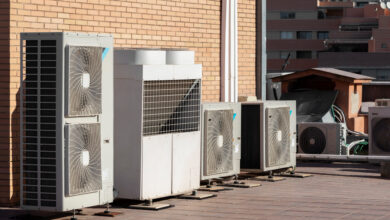Things to Know Before Installing a PA System in a Building

Planning out and installing a PA system with microphone and speakers is not as simple as many people think. You need to consider various aspects of the installation, including how much coverage you need for your space, what kind of noise the speakers will produce, and more. In this article, we’ll cover some basic guidelines for choosing a PA system for your building.
What auditory coverage do you need?
If there are several rooms and open spaces in your building, there will likely be many different zones. For example, if one room is used for meetings and another for recording podcasts or playing music, those two areas will probably require separate PA systems.
How many people do you want to communicate with at once?
If only a few individuals will be able to hear the message being shared through the system (for example, just members of an office or classroom), then it may not make sense for everyone else to hear it too because doing so would be distracting and unnecessary. This could also apply when integrating an existing sound system with a new one; if only certain areas have speakers installed right now but more rooms have been added since then, consider whether additional speakers are needed before adding them so as not to clutter up the space unnecessarily.
What type of sound system do you want?
Different types come with their advantages and disadvantages—some might even be better suited than others depending on how often they’ll need maintenance done on them throughout their lifecycles as well. It’s important not only knowing which type works best but also why they work differently so we’re able to make educated decisions about what kinds work best within our environments.
How much noise will it produce?
The amount of sound produced by an audio system depends on a few factors, including the size and type of speaker used in the system. Some systems are more powerful than others, so if you’re unsure about which one to choose for your space or application, be sure to ask for help from an expert.
Most systems have different volume controls (located on individual loudspeakers) to control how much sound is sent out into the room at once. If you need something louder, simply turn up all your speakers’ volume knobs until they reach their maximum level—but don’t turn them up! You’ll just cause yourself more trouble later when someone wants things quieter again because there won’t be enough power left over in each speaker’s amplifier circuit board after running them at full tilt all day long.
How big is the space?
To determine how many speakers you will need to install, you need to know the size of your space and how often it will be used. In general, larger spaces require more speakers than smaller ones. The amount of sound you need is also dependent upon how many people will be speaking at once and whether or not they’re all on stage at the same time.
If you don’t know what size your room is, try measuring it yourself using a tape measure (or by calling in an expert if necessary). You might also want to take note of its height and width in case this information comes in handy later on.
It helps if there are concrete numbers here—but don’t worry too much about being exact with these figures! Just do whatever makes sense for where your room falls within certain parameters: small conference rooms may only need one speaker while larger auditoriums could benefit from several dozen depending on their purpose (for example, conferences versus worship services).
The best way to figure out what type of PA system would work best for each application would probably be through trial-and-error based on experience rather than theoretical knowledge alone; however, you may start with something simple before moving on to bigger projects down the road.
Will your PA system conform to standards?
Whether you’re installing a new PA system or upgrading an existing one, it’s important to know if your setup will conform to codes and regulations. This applies to any type of sound system—from your car stereo to the PA at your local coffee shop.
Whether you’re installing a new PA system or upgrading an existing one, it’s important to know if your setup will conform to codes and regulations. This applies to any type of sound system—from your car stereo to the PA at your local coffee shop. To determine if a product is safe for use in a building, you can check its operating manual. This should tell you what voltages are required for operation and whether there are any potential hazards associated with using the device (for example, fire hazards).
Do you need a VOIP PA system?
A VOIP system is a digital telephone system that uses Voice over Internet Protocol (VoIP) technology to transmit calls over an internet connection. Although these systems have been around since the 1990s, they’ve only recently become popular in businesses and organizations with smaller budgets. If you’re considering installing a new PA system in your building but don’t want to pay for traditional wiring services, installing a VOIP system may be right for you. You should note, however, that there are some drawbacks to using this type of phone service as well:
-
Cost
A traditional dedicated phone line can cost anywhere between $40-$180 per month depending on your area and provider. On top of that monthly fee comes the cost of paying someone qualified to install your new infrastructure correctly—which could cost thousands at minimum (and much more if you hire an electrician). With a VoIP service installed in place instead, all of those costs go away overnight because there aren’t any wires or cables needed at all.
-
Reliability
One major drawback here is reliability; while most households today have access to both wired and wireless connections through their internet providers’ Wi-Fi routers or cellular service plans respectively – businesses often rely solely upon wired connections due to their higher speeds being necessary for work purposes such as video conferencing online meetings etc.
Getting the right PA system for your needs is important.
A good PA system will be designed to fill the space you need it to fill. The system you choose should be able to cover the area you need it to cover. Also, the system should be able to handle the noise levels you need it to handle.
Conclusion
If you’re looking for the right PA system for your needs, there are many factors to consider. You need to think about what kind of auditory coverage you need in your space—and this will change depending on how big it is and other factors like noise levels. You should also consider whether you need a VOIP (Voice Over Internet Protocol) connection or just a standard wired PA setup; these two different types of systems offer different features and capabilities so it depends on what features are most important for you personally or your business. Finally, make sure that whatever model fits all these criteria before signing off on an expensive purchase.




